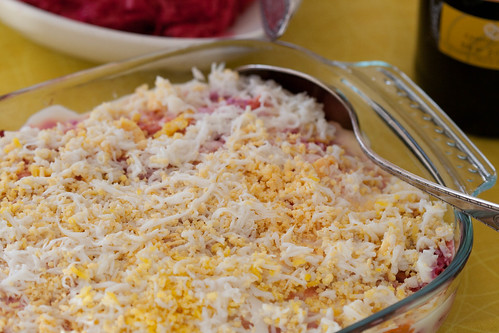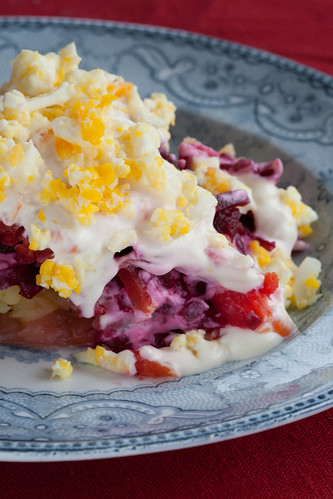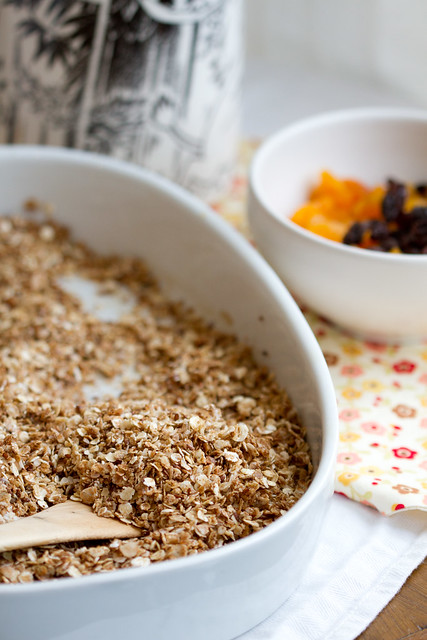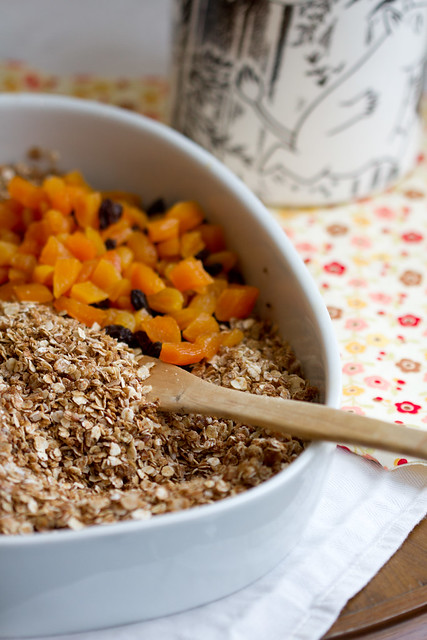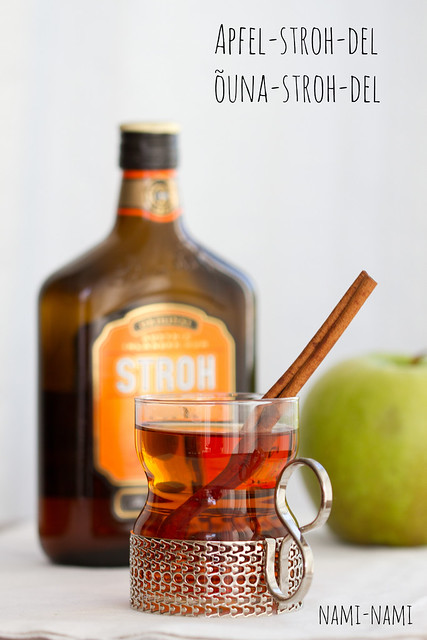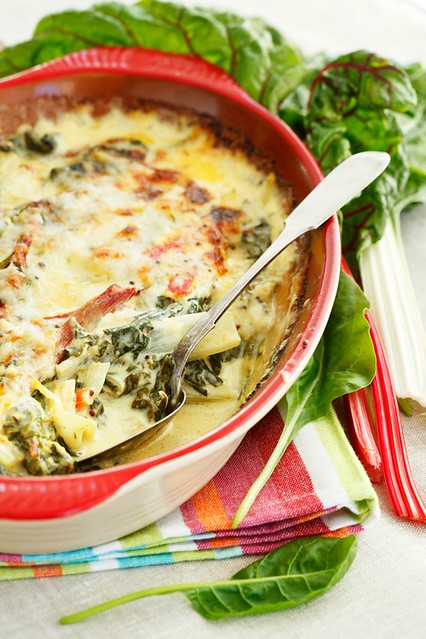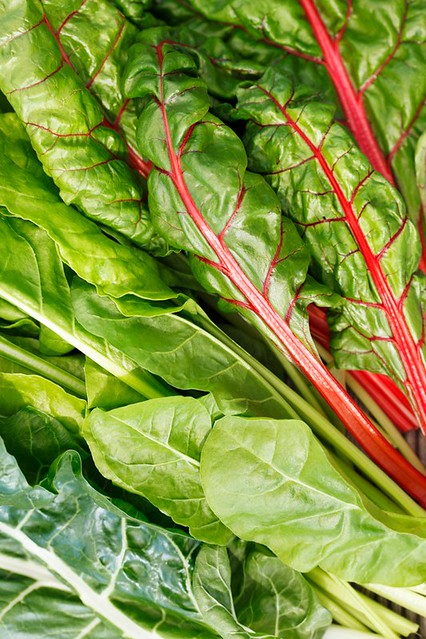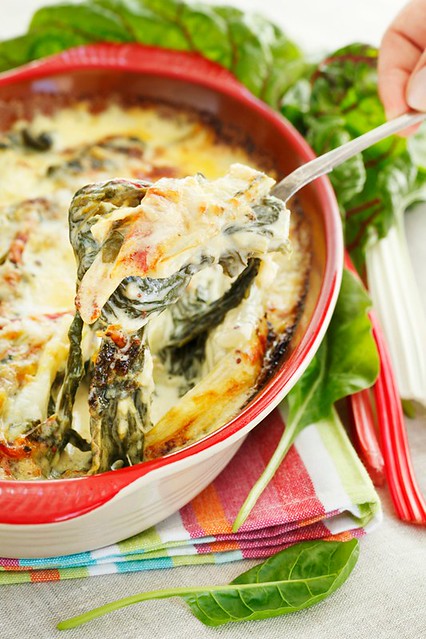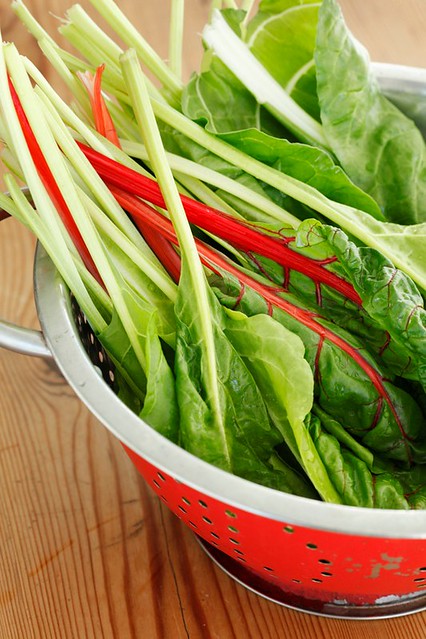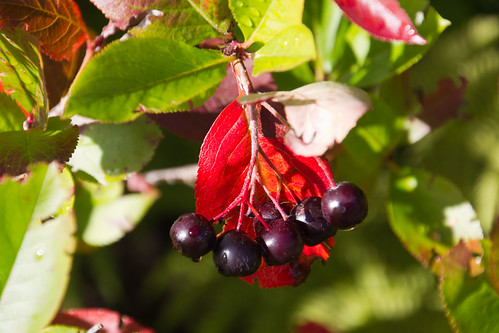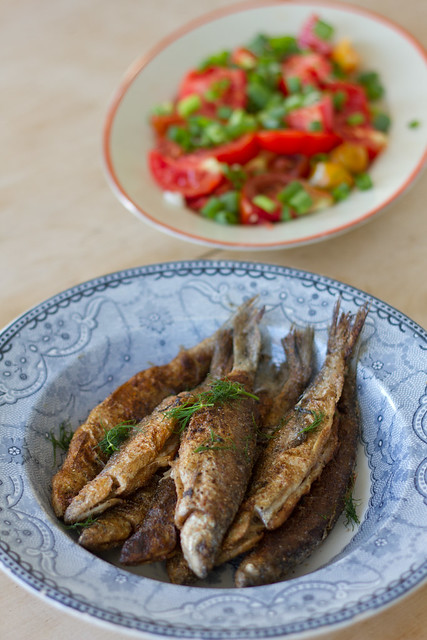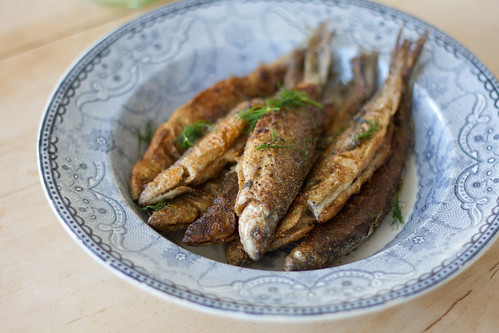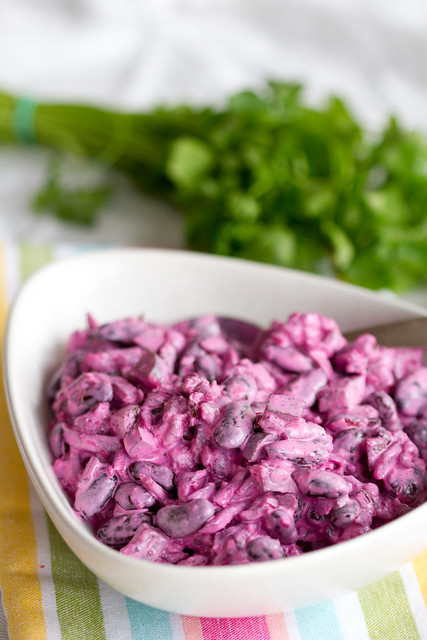
A few years ago Saveur, the American food magazine, featured some Latvian recipes (Latvians, remember, are our Southern neighbours). Among them was a recipe for beet and bean salad, Pupiņu un Biešu Salāti, that caught my attention. I love beetroot, and cook and eat various beetroot salads quite frequently. Some of my favourite beet salad recipes have been featured here on Nami-Nami as well over the last 9+ years, like the Russian vinaigrette salad, beet and potato salad, layered vegetable salad with smoked salmon, to name just a few.
Given my love of beets and the simplicity of the salad, it was only the matter of time I made this salad. We loved it, a lot, although the salad is probably more Russian than Latvian in its origins (any Latvian readers wanna comment on this?). It has also proved to be highly popular with my Estonian readers (like the ones on Nami-Nami's Facebook page), and who knows, perhaps you'll be positively surprised as well :)
Just a handful of ingredients, but surprisingly lot of flavour. Gluten-free as well.
Latvian Beet and Bean Salad
(Peedi-oasalat)
Adapted from Saveur.com
Serves six to eight
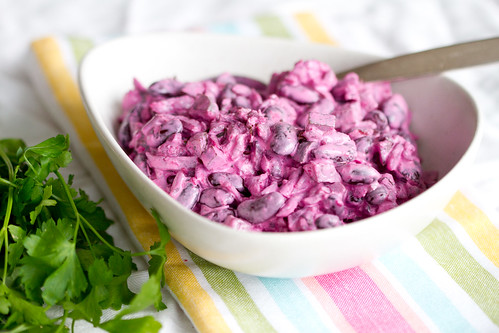
200 g sour cream (20%)
100 g mayonnaise
400-500 g cooked beetroot*
2 cans of kidney beans (about 400 g/12 oz each), rinsed and drained
4 pickles, chopped
salt and pepper
fresh parsley or chives, finely chopped
* You can use boiled, steamed or roasted beet to make this salad. I use coarsely shredded boiled beetroot.
In a large bowl, whisk the sour cream and mayonnaise until combined, then season with salt and pepper. Add the beet, beans and pickles, folding them into the sour cream and mayonnaise dressing. Season again, then transfer the salad into the serving dish and sprinkle with herbs.

